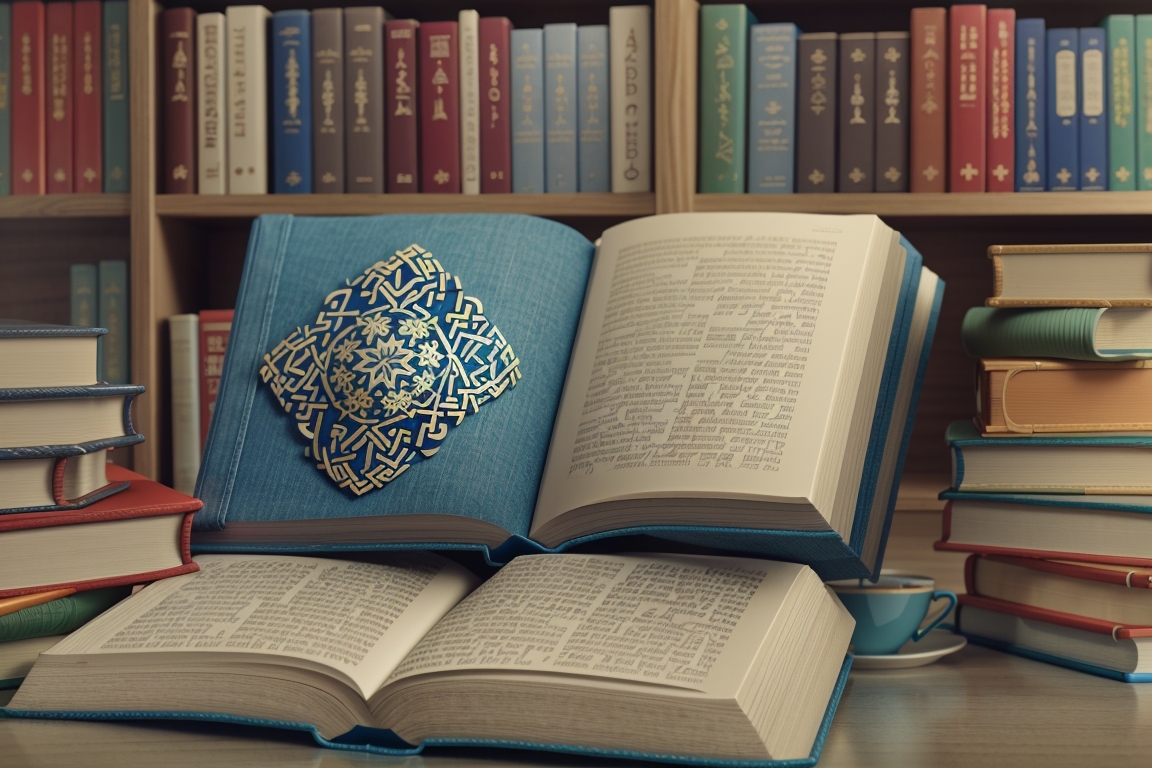The Irish Language Revival: Charting the Path from Decline to Renaissance

Updated On: April 22, 2024 by Ciaran Connolly
The Irish language revival is a testament to the resilience of cultural identity and the passion of people to keep their heritage alive. From its decline in the 19th century — largely due to the Great Famine and subsequent emigration — the Irish language has experienced a remarkable renaissance. Efforts to revitalise the language became entwined with Irish nationalism, leading to a concerted movement to reintroduce Irish as a spoken language across the country.

This linguistic resurgence was driven by numerous cultural and political factors, ranging from the work of dedicated revivalists to official policies designed to promote the language in both education and public life. The Gaelic League, established in 1893, played a pivotal role, advocating for the language’s use and engaging communities in learning and speaking Irish. The movement not only supported linguistic revival but also fostered a broader appreciation for Irish literature, music, and the arts, which further solidified the language’s role in the nation’s identity.
Table of Contents
Historical Context of the Irish Language Decline

In examining the historical context of the Irish language decline, we must consider pivotal events that contributed significantly to the shift in language use across Ireland.
The Great Famine and Language Shift
The Great Famine of the 1840s was a catastrophic event that drastically reduced the Irish population through starvation and emigration. English was increasingly seen as the language of economic opportunity, leading to a sharp decline in Irish as the primary language. Thus, the famine marked a turning point, accelerating the language shift as individuals and communities adopted English to improve their socioeconomic standings.
Formation of the National School System
With the formation of the National School System in the 19th century, English was established as the medium of instruction, further eroding the use of Irish. These schools discouraged and often punished the use of the Irish language, compelling children to adopt English and pass on this preference to subsequent generations. The impact on the Irish language was severe, embedding English among the populace and contributing greatly to its decline.
Cultural Nationalism and the Gaelic Revival
In the late 19th and early 20th centuries, Ireland saw a significant resurgence of interest in its native culture and language, known as the Gaelic Revival. This movement was deeply intertwined with the rise of cultural nationalism, reflecting a desire to reclaim Irish identity in the face of centuries of British rule.
Rise of Political Nationalism
The Gaelic Revival occurred in a period when Irish nationalism was gaining momentum. This political movement sought political autonomy and the preservation and celebration of a unique Irish identity. Irish nationalists believed cultural heritage was a fundamental component of a nation’s character and should be fostered to promote national pride and unity. At the intersection of culture and politics, cultural nationalism emerged as a pillar of the broader nationalistic agenda.
The Gaelic League and Cultural Movements
Established in 1893, the Gaelic League (Conradh na Gaeilge) was central to the Gaelic Revival. This organisation aimed to revive the Irish language and restore it as a spoken tongue across Ireland. It also advocated for the appreciation of Irish literature, music, and art. These cultural elements were seen as vital to the survival of the Irish ethos and became symbols of the nation’s enduring spirit. Through education, the League sought to embed the Irish language at the heart of daily life and cultural expression. The activities and efforts of the Gaelic League brought about a renaissance of Irish folklore, traditional games, and Gaelic sports, consolidating a distinctive Irish culture amidst a wave of growing Irish nationalism.
Prominent Figures in the Revival Movement
In steering the Irish language and culture towards rejuvenation, key individuals made significant contributions, leaving an indelible mark on the Irish Literary Renaissance.
Contributions of Douglas Hyde
Douglas Hyde, known as the father of the Gaedhilge revival, was pivotal in maintaining the survival of the Irish language during times of decline. As the founder of the Conradh na Gaeilge (Gaelic League) in 1893, Hyde sought not only to preserve but also to revive Irish as the common tongue of all Ireland. His vision was distinguished by efforts to de-politicise the language, promoting it across all facets of Irish society. One of Hyde’s notable works includes his “A Literary History of Ireland,” which bolstered Irish nationalism and cultural identity.
Eoin MacNeill and Other Leaders
Eoin MacNeill, a scholar and co-founder of the Gaelic League, played an instrumental role alongside Hyde. His commitment to the Gaelic revival became a cornerstone for the cultural nationalism that eventually contributed to Ireland’s independence movement. Patrick Pearse, another important figure, also embraced the Irish language, intertwining it with education. Pearse’s St. Enda’s School (Scoil Éanna) championed an innovative curriculum that celebrated Irish heritage and language, equipping a new generation with a sense of national pride intertwined with the Gaelic League’s goals.
The Linguistic Renaissance of the Irish Language
The Irish language has experienced a remarkable resurgence, marked by vigorous revival efforts and the establishment of Gaeltacht regions dedicated to preserving and fostering this linguistic treasure.
Revival Efforts and Bilingualism
In our quest to breathe new life into the Irish language, we’ve witnessed a groundswell of initiatives aimed at promoting linguistic proficiency and cultural pride. Organisations have laid the groundwork for a bilingual Ireland, where Irish-speaking communities and monoglot Irish speakers enjoy the resources to maintain and grow their linguistic heritage. As part of these efforts, educational programmes have been essential in supporting the Irish language revival, enabling both young and old to become active Irish speakers.
Establishing the Gaeltacht Regions
To safeguard and revitalise the language, we’ve designated Gaeltacht regions—areas where Irish is the predominant language spoken, enriching the cultural tapestry of Ulster and other areas. These regions are not just geographical demarcations; they are vibrant cultural strongholds that encourage monoglot Irish speakers and bilingualism. The Gaeltacht serve as a bastion for the language, ensuring that the tradition of speaking and learning Irish is passed down through generations, keeping the linguistic renaissance alive and well.
Impact of the Easter Rising on the Language Revival
The Easter Rising of 1916, a pivotal moment in Ireland’s quest for independence, significantly bolstered the Irish language revival movement. Spearheading this resurgence were the rebellion leaders, for whom the revival of the vernacular was inseparable from Ireland’s assertion of a distinct national identity.
Our linguistic heritage witnessed a decline under centuries of British rule, leading to English becoming the dominant tongue. However, the Rising’s participants, many involved with the Gaelic League, saw the restoration of the Irish as a cultural imperative. They argued that the Gaelic spirit was encapsulated in the Irish language, causing its revival and using a political act of defiance.
In the wake of the Easter Rising, public sentiment swelled in favour of embracing all things Irish. The language, which had been retreating to the western fringes, began to symbolise collective national aspirations. It became embedded in educational policy, and proficiency in Irish became a requirement for public service jobs, embedding the language further in the societal framework.
- Increased popularity: The Rising’s patriotic fervour resulted in a surge of enrolment in Irish language classes.
- Irish language in education: It became a subject in schools, augmenting its daily use.
This period marked not merely a resurgence of the Irish in a practical sense but also an intellectual and emotional reconnection to an element of heritage that had been suppressed. The Gaelic League, which played a central role in pre-rising, found new impetus following the rebellion. Our identity, wrapped in the language, was rekindled with a sense of pride and autonomy, setting the foundation for a cultural renaissance that would see the Irish tongue endure and evolve into modern times.
Literary Contributions and the Irish Literary Revival
The Irish Literary Revival was instrumental in bringing forth a renaissance of Irish culture through literature, critically impacting national identity and heritage. Central to this movement were the establishment of distinguished literary institutions and the pioneering works of several key literary figures.
Founding of the Irish Literary Theatre
In 1899, the Irish Literary Theatre was founded with the objective of promoting Irish literature and playwrights. It served as a catalyst for the movement and a predecessor to the iconic Abbey Theatre, which opened its doors in 1904. The Abbey Theatre became a national theatre of Ireland and played a pivotal role in the development of Irish drama, showcasing the works of influential playwrights and nurturing Irish cultural nationalism.
Key Literary Figures and Their Impact
William Butler Yeats, one of the co-founders of the Irish Literary Theatre, was a driving force in the revival. His literary prowess in poetry and dramatic works significantly shaped the revival’s direction and left a lasting imprint on Irish literature.
John Millington Synge, another prominent figure, brought authentic representations of Irish life to the stage with plays such as The Playboy of the Western World. Synge’s contributions dealt with themes that resonated with the Irish populace, often centred on rural life and its complexities.
This era saw Irish literary figures ardently contributing to a distinct body of work characterised by a focus on Gaelic heritage, folklore, and national identity. Their impacts were profound and long-lived, helping to forge a unique literary path for Ireland.
Folklore, Music, and the Arts in Revitalising Irish
Throughout our rich history, Irish folklore, music, and the arts have been essential in breathing new life into our language and culture. We are witnessing a renaissance where these timeless traditions act as catalysts in the revival and promotion of the Gaelic language.
Preservation and Promotion of Folklore
Our commitment to preserving our folklore is unwavering. By recording and sharing age-old tales, we safeguard a precious link to our past. The Gaelic Union plays a pivotal role in this, organising events and workshops that serve as both educational tools and a medium to foster communal bonds.
Influence of Music and the Arts
Music and the arts have always been powerful forces in shaping Irish identity. Such as how groups like The Gloaming have married traditional melodies with contemporary sensibilities, thus bringing Irish folklore to global audiences within prestigious concert halls. Similarly, through the visual arts, we convey our ancestral stories, ensuring they endure and inspire a burgeoning sense of nationalism and pride in our Gaelic heritage.
The Role of Sports and Organisations in Language Promotion
In the resurgence of the Irish language, key institutions such as the Gaelic Athletic Association and the Society for the Preservation of the Irish Language have played pivotal roles in intertwining athletic and cultural endeavours to promote linguistic heritage.
Gaelic Athletic Association
The Gaelic Athletic Association (GAA), founded in 1884, has been instrumental in promoting not only sports but also the Irish language. Its establishment represented a clear stand against the anglicisation of Irish culture and facilitated a space where the Irish language could flourish in tandem with traditional sports. This merging of athletics and language fostered a sense of national pride and cultural identity, helping to revive and maintain the language during periods of decline.
The association’s effort to promote the Irish language extends to naming clubs and stadiums in Irish, and it encourages the use of the language in official communications.
Society for the Preservation of the Irish Language
The Society for the Preservation of the Irish Language (SPIL), established in the late 19th century, has been a key advocate for the Irish language. Its role in the language revival included lobbying for legislative changes to include Irish in the education system and public affairs. Through public lectures, publications, and the introduction of Irish language classes, the SPIL significantly contributed to reawakening interest in the language during a time when English was the predominant language in Ireland.
The society’s initiatives were complemented by Conradh na Gaeilge‘s broader cultural and linguistic activities, which further solidified the societal shift towards embracing Gaelic heritage.
Modern Efforts in Irish Language Revival
In this section, we explore the significant progress made in revitalising the Irish language through modern media platforms and educational initiatives.
The Influence of Media and Broadcasting
The establishment of TG4, the Irish language television channel, has played a pivotal role in the resurgence of the language. Not only does it provide daily content in Irish, but it has also fostered a sense of community and identity among speakers. TG4 has managed to achieve this by showcasing a mixture of entertainment, drama, and documentaries, all of which have sparked a renewed interest in the language.
Educational Policies and State Support
State support for the Irish language is evidenced in the educational system. The curriculum for primary education now includes Irish language studies as a core subject, ensuring that every child gets a chance to learn and use the language from an early age. Furthermore, there are numerous initiatives and funding opportunities available to support schools that teach Irish, which underscores the government’s dedication to language preservation and growth.
Legacy and Future of the Irish Language
The Irish language, a cornerstone of our national identity, carries a robust legacy intertwined with the history of Ireland. From the scholarly monks of early medieval Ireland to the Irish Free State’s 20th-century efforts, Gaeilge has been an emblem of cultural continuity and change. Despite historical decline, we now witness a vibrant linguistic renaissance.
Originally spoken by small communities and Presbyterian groups, among other denominations, the language suffered during British rule, leading to its status as a minority language. However, the formation of the Irish Free State in 1922 marked a turning point, emphasizing the language’s revival as a symbol of national identity. This policy aimed not only to restore fluency but also to cement Irish as a living language in a modern context.
Today, we observe a surge in interest and initiatives aimed at furthering the language’s growth. The future of the Irish language appears promising, with increased resources for education and media, as well as community support. Our task is to continue fostering environments where Gaeilge can be used daily, thereby ensuring its survival and flourishing.
Bold Steps Ahead:
- Education: Embedding Irish in the curriculum to foster early adoption.
- Media: Promoting Irish language media for broader engagement.
- Technology: Leveraging digital platforms to enhance accessibility and usage.
To sum up, the legacy of the Irish language is a testament to our resilience, while its future relies on our collective efforts to embrace and normalise its use across all spheres of life.
Frequently Asked Questions
In this section, we address common inquiries about the Irish language’s history, its decline, and the extensive efforts made towards its revitalisation.
What were the primary reasons for the decline of the Irish language?
The waning of the Irish language can largely be attributed to historical events such as the English colonisation of Ireland. Legislative acts and policies, such as the Education Act of 1831, greatly favoured English over Irish, resulting in a steady decline in Irish language speakers.
What strategies were employed to revitalise the Irish language?
To breathe new life into the Irish language, strategies involved the establishment of the Gaelic League in 1893, which advocated for Irish education to be taught in schools and used in public life. Additionally, the Irish government’s policy after independence in 1922 aimed to promote the language through the education system and public services.
To what extent has the Irish language been successfully revived?
There has been a measurable resurgence in the number of Irish language speakers, especially in the Gaeltacht areas. Programmes like TG4, an Irish language television channel, and increased language education efforts have bolstered the language’s presence in daily life.
How did historical events contribute to the Irish language revival effort?
Historical events such as the Irish Literary Revival influenced the national sentiment and helped spur the rejuvenation of the Irish. The cultural nationalism that grew from this period was integral in anchoring the importance of language.
What role did the Irish Literary Revival play in promoting the Irish language?
The Irish Literary Revival, a part of the broader Celtic Revival movement, was pivotal in the late 19th and early 20th centuries. Spearheaded by figures like W.B. Yeats, it rekindled interest in Ireland’s cultural heritage and language, establishing a renewed sense of pride in the Irish identity.
How has the status of the Irish language changed in recent years?
In recent years, the status of the Irish language has seen notable improvement with an increased presence in media, education, and legislation. Initiatives like the Official Languages Act 2003 and the comprehensive 20-Year Strategy for the Irish Language 2010-2030 exemplify the ongoing commitment to preserve and promote Irish.






